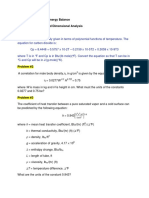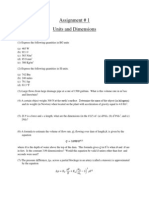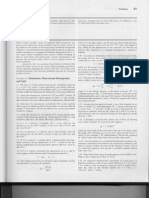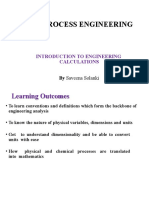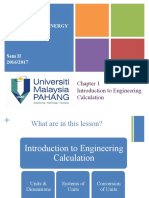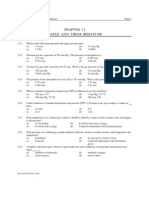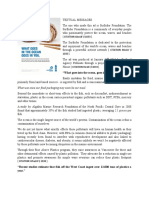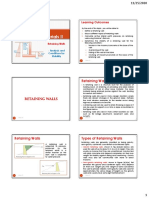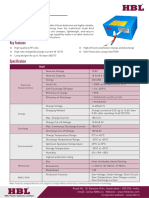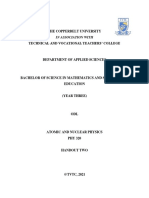Subject name: MATERIAL & ENERGY SUBJECT CODE:3130508
BALANCE COMPUTATIONS
Course Outcome: CO3130508.1
CHEMCIAL
ENGINEERINGDEPARTMENT
L. E COLLEGE, MORBI
TUTORIAL-01
1. The flow rate of water through a pipe is reported as 20 ft 3/ min. Convert the
volumetric flow rate into the mass flow rate in kg/sec. Density of water is 1 gm/cc.
2. A force equal to 192.6 N is applied on a piston with a diameter of 5 cm. Find the
pressure exerted by the piston in kPa, bar and psi.
W-18
3. Pressure drop across a Venturi scrubber can be calculated using the following
equation, ΔP= (5 * 10-5) v2 L where, ΔP= pressure drop in WC, L= liquid flow rate,
US gal/1000 ft3 gas v = gas velocity in the Venturi throat, ft/s. Convert the equation in
SI units.
W-18
4. 1 atmospheric pressure = ----- psi. S-18
5. In double effect evaporator plant the second effect is maintain under vacuum of
475torr (mmHg). Find the absolute pressure in kgf/cm2, kpa, atm, bar.
W-17, S-18 , W-20
6. what is the unit operation and unit process and give a difference between unit operation
and unit process?
7. derived quantities is table 1.2 in si , mks , cgs, fps.
8. The conductance of a fluid flow system is defined as the volumetric flow rate,
referred to a pressure of one torr (133.233 Pa). For an orifice, the conductance C
can be computed from
C=89.2A(T/M)1/2ft3/s where, A = area of opening, ft2, T = temperature, 0R, M = Molar
mass
Convert the empirical equation in SI units.
S-15, W-15, W-17, S-19
9. Iron metal weighs 200lb& occupies a volume of 117 liter. Find the
density in kg/m3 .
W-15
10. an orifice meter is used to measure the flow rate in pipes. The flow rate is related to the
pressure drop by an equation of the form
U=C(p/)1/2
Where, u = fluid velocity in m/s, =Pressure drop in N/m2, =density of flowing
fluid in kg/m3, C is proportionality constant. What is the unit of C in the SI system of
units?
�S-16
11. Answer the following:
(i) The SI unit of pressure is _____________.
(ii) Density is a fundamental quantity. (True/False).
(iii) 1 atm = ___________ bar.
(iv) Unit of Luminous intensity is ___________.
W-16
12. Convert: Wavelength 9000Ao to nm
S-17
13. Iron metal weighing 500 lb occupies a volume of 29.25 L. Calculate the
density of Fe in kg/dm3
S-17, S-19, W-19
14. The diameter and height of a vertical cylindrical tank are 5 ft and 6 ft 6 in respectively.
it is full up to 75% height with carbon tetrachloride (CCl4), the density of which is 1600
kg/m3. Find the mass in kilograms.
W-17
15. The volumetric flow rate of kerosene in 80 mm nominal diameter pipe is 75 Imperial
gallons per minute. Taking the density of kerosene as 0.8 kg/dm3, find the mass flow in
kg/s.
S-19
16. Find the value of Universal gas constant R in following units.
1. atm.liter/gm mole.K 2. m3.atm/kmol.K 3. joule/gm mole.K
4. cm3.torr/gm mole.K
W-19
17. What is Fundamental quantity? Give units of following in terms of fundamental
quantity: Area, Volume, and Work.
W-19
18. Define Fundamental and Derived Units with example
W-20












